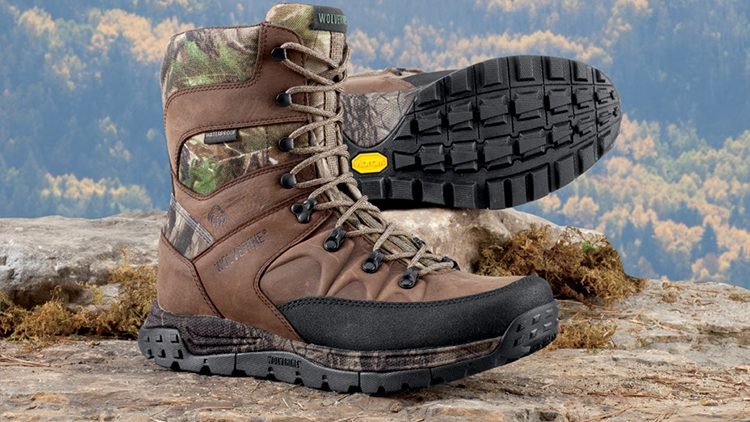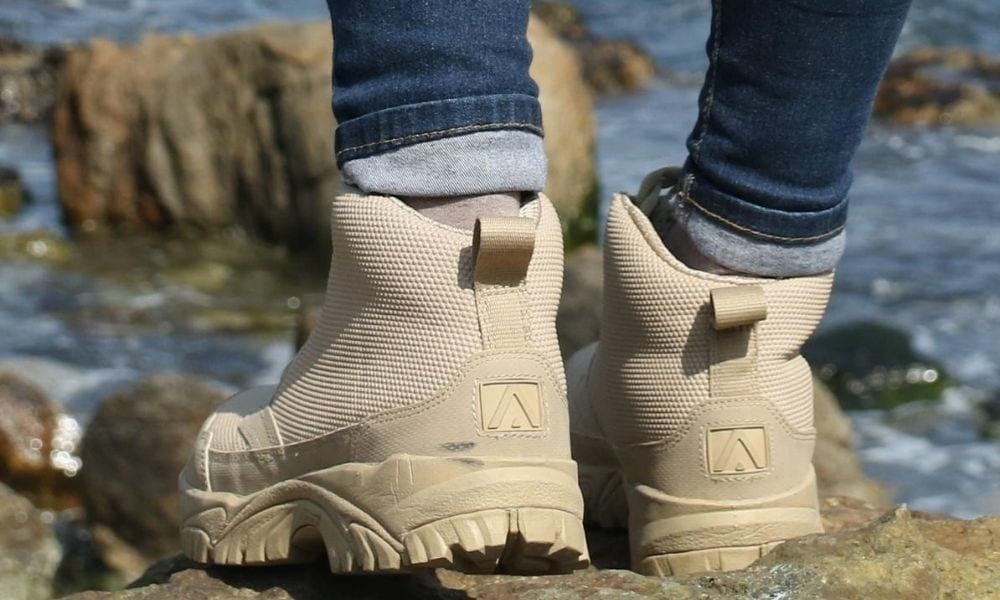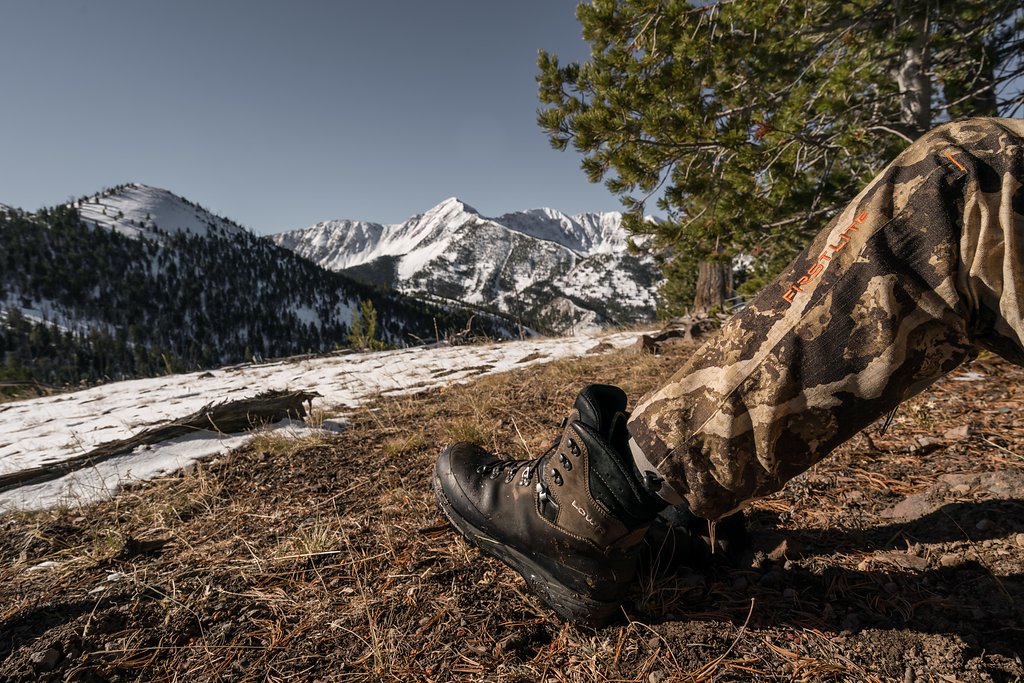Curious about outdoor footwear?
What sets hiking boots apart from hunting boots? Whether you’re a seasoned outdoor enthusiast or just getting started, understanding the critical differences between these two types of boots is crucial for choosing the right gear for your adventures.
This guide explores the distinct features, purposes, and designs of hiking and hunting boots, helping you make informed decisions for your next trek or hunt. Let’s lace up and hit the trail to uncover the disparities between these essential pieces of outdoor gear.
What is a hunting boot?
Hunting boots are a type of footwear intended for use in hunting and other outdoor activities. They frequently have reinforced toe caps and heels for protection from sharp objects or uneven terrain.
The soles are typically made of rubber or other non-slip materials to aid footing in wet or slippery conditions. Hunting boots come in various styles and colors and can be customized to fit the terrain and climate you’ll be walking in.
Features such as odor-resistant materials and gusseted tongues can help keep your feet dry and free of irritating bacteria and fungi. Always choose a boot that fits comfortably and provides adequate foot support.
Depending on your hunting style and conditions, various hunting boot types are available. We have profiled three of the most common hunting boot types below.
Three Types of Hunting Boots

1. Leather Hunting Boots
Leather hunting boots are a popular choice because of their durability and longevity. They can also be waterproofed or treated with moisture-resistant materials to keep your feet dry. However, leather boots are heavier than other types.
2. Synthetic Hunting Boots
Hunting boots frequently use synthetic materials like nylon and polyester because they are lightweight and breathable. They are usually waterproof and highly durable, ideal for hunting trips in wet or muddy terrain areas.
3. Gore-Tex Hunting Boots
Gore-Tex is a patented material that is both waterproof and breathable. It is widely used in outdoor clothing, such as hunting boots because it keeps your feet dry and comfortable. Gore-Tex boots typically cost more than traditional leather or synthetic models but provide superior weather protection.
What is a Hiking Boot?
A hiking boot is a footwear designed for long walks through rough terrain. These boots offer extra ankle support and cushioning to help prevent ankle sprains, which is essential when hiking long distances.
They shield you from the elements and keep your feet dry. Hiking boots are available in various materials, including leather, mesh, synthetic fabric, and rubber.
Hiking boots also provide better traction on uneven terrain, essential for a safe and comfortable hike. They also have protective toe boxes, which safeguard you from rocks and roots on the trail. Hiking boots have a higher cut and more cushioning than other outdoor footwear, ensuring comfort and support on long hikes.
Three Types of Hiking Boots

Hiking boots come in various shapes, sizes, and styles. Here are three popular hiking boot types to help you narrow down your options.
1. Lightweight Hiking Boots
These are perfect for short trails or day trips because they provide adequate support without weighing you down. Lightweight hiking boots are typically made from breathable mesh and synthetic materials, keeping your feet dry and comfortable.
2. Midweight Hiking Boots
These boots offer more stability than lightweight hiking boots while remaining relatively light. They are excellent for those planning to hike more challenging trails.
3. Heavyweight Hiking Boots
Heavyweight boots are the way to go if you intend to tackle a more challenging trail or carry a significant weight. They provide the most support and protection but are also cumbersome. Heavyweight hiking boots are made of leather and other durable materials, making them heavy but resistant to the conditions you may face while hiking in rough terrain.
4. Comfort versus Durability
Hiking and hunting boots may look similar, but they serve various purposes. Hiking boots are made with comfort in mind, with soles that protect your feet while allowing enough flexibility to feel comfortable on uneven terrain.
They include extra padding or support structures around the ankle and tongue area to keep your feet safe.
On the other hand, hunting boots are crafted with durability in mind, with gripping soles that can handle even the most slippery surfaces while remaining safe. Many hunting boots also have waterproof linings to keep your feet dry regardless of hunting conditions.
5. Support versus Flexibility
Hunting boots are essential to the hunter’s toolkit, particularly for ankle support. Hunting boot designs have higher ankles than hiking boots, providing more stability and protection from potential injuries.
On the other hand, hiking boots provide more flexibility for those who do not require additional support but at the expense of ankle safety when traversing rough terrain.
Hunting boots have thicker, more rugged soles than hiking boots, making them ideal for hunting. The thick soles protect hunters from sharp objects such as jagged rocks and broken solid tree branches they may encounter while hunting in the deer woods, providing additional peace of mind.
Meanwhile, hiking boots possess thinner and more flexible soles, allowing wearers to feel more connected to the terrain and adapt better to different surfaces.
Hunting boots are essential if you plan on hiking through rugged outdoor terrain and want to keep your feet safe.
6. The Materials
Hunting and hiking boots are intended to protect your feet in various conditions. Hunting boots are typically made of waterproof materials, keeping your feet dry even on the wettest days.
Meanwhile, hiking boots typically use breathable materials to keep your feet cool and comfortable on long hikes in hot weather. So, whether your mission takes you through muddy puddles or dry trails, ensure you wear the appropriate boots.
7. The Look and Style
Hunting boots are designed to allow you to hide in plain sight. They usually have a camouflage pattern that will enable you to blend in with your surroundings, whether you’re hunting or scouting new hunting areas. On the other hand, if you’re going on a hike, hiking boots will keep your feet safe and supported on any terrain.
It’s no secret that hiking boots prioritize function and comfort over fashion. However, those looking for an alternative to basic designs need more luck in traditional versions, as camouflage is rarely seen in typical hiker footwear.
FAQs
- What are the critical differences between hiking boots and hunting boots?
Hiking boots are designed for long walks through rough terrain, prioritizing comfort and ankle support. They offer traction on uneven surfaces and protective toe boxes. Hunting boots, on the other hand, focus on durability and weather protection, often featuring reinforced toe caps, waterproofing, and camouflage designs.
- What types of materials are commonly used in hunting boots?
Hunting boots can be made of various materials, including leather, synthetic fabrics like nylon and polyester, and advanced materials like Gore-Tex. Each type offers different benefits regarding durability, waterproofing, and breathability.
- What features distinguish lightweight hiking boots from heavyweight hiking boots?
Lightweight hiking boots are suitable for short trails or day trips, offering adequate support without adding extra weight. Heavyweight hiking boots, on the other hand, provide maximum support and protection, making them ideal for challenging trails or carrying heavy loads.
- How do hunting boots prioritize durability, and what benefits do they offer for hunters?
Hunting boots prioritize durability through features like thicker, rugged soles and waterproof linings. These attributes protect sharp objects and slippery surfaces, which are crucial for hunters navigating rough outdoor terrain.
- What distinguishes the soles of hunting boots from hiking boots, and why is it important?
Hunting boots typically have thicker, more rugged soles, providing stability and protection in harsh outdoor environments. In contrast, hiking boots feature thinner, more flexible soles, allowing wearers to feel connected to the terrain and adapt to different surfaces comfortably.
- How do the appearances of hiking and hunting boots differ, and why does it matter?
Hunting boots often feature camouflage patterns to help hunters blend into their surroundings, prioritizing functionality over fashion. Hiking boots, while focusing on support and comfort, usually have more conventional designs that don’t include camouflage patterns, catering to outdoor enthusiasts exploring various terrains.
Conclusion
While hiking and hunting boots may seem similar at first glance, they serve distinct purposes. Hiking boots prioritize comfort and flexibility, supporting long treks over various terrains.
Conversely, hunting boots prioritize durability and protection, with features like camouflage patterns to aid in concealment during hunts. Understanding the disparities between these two types of outdoor footwear is essential for selecting the right gear.

